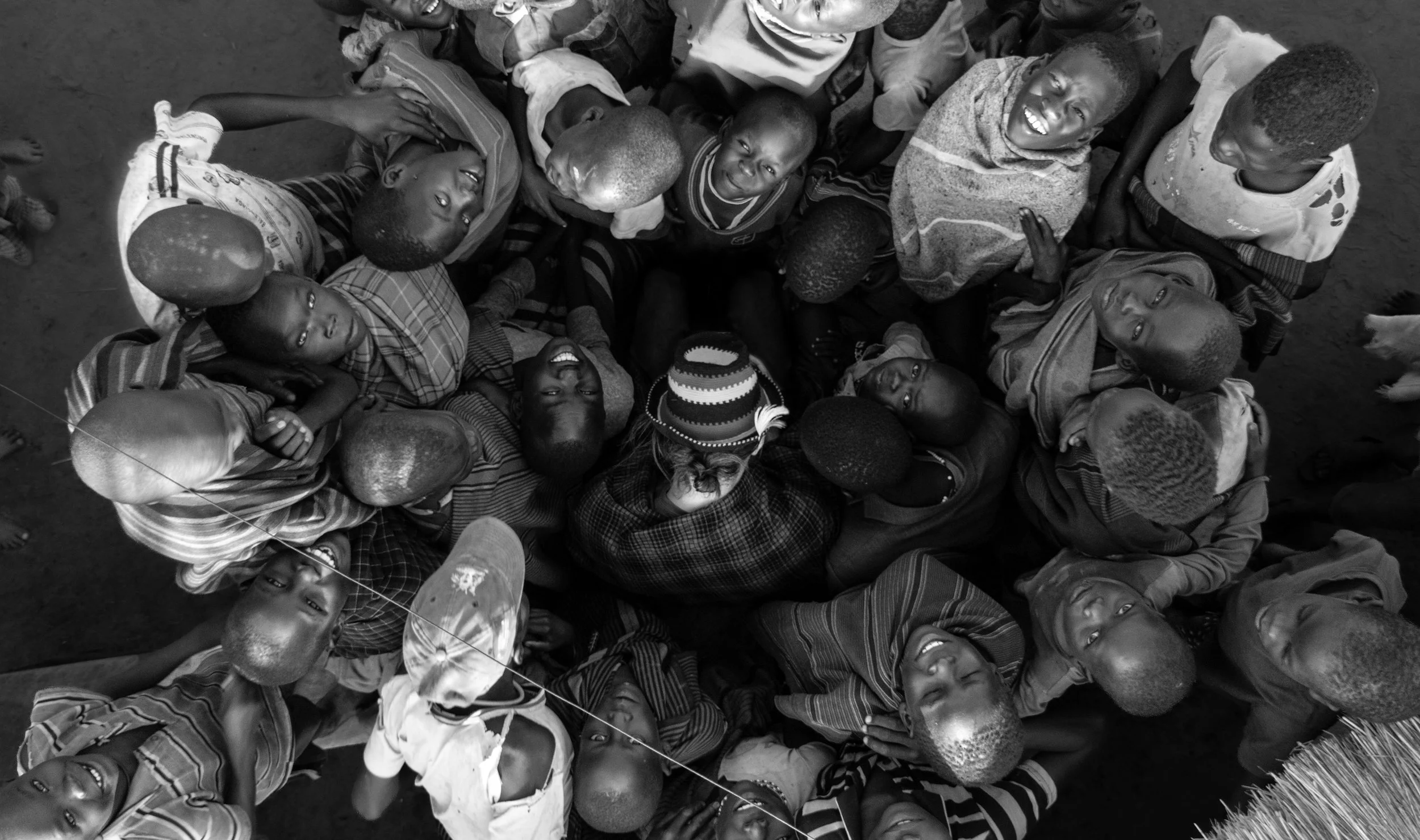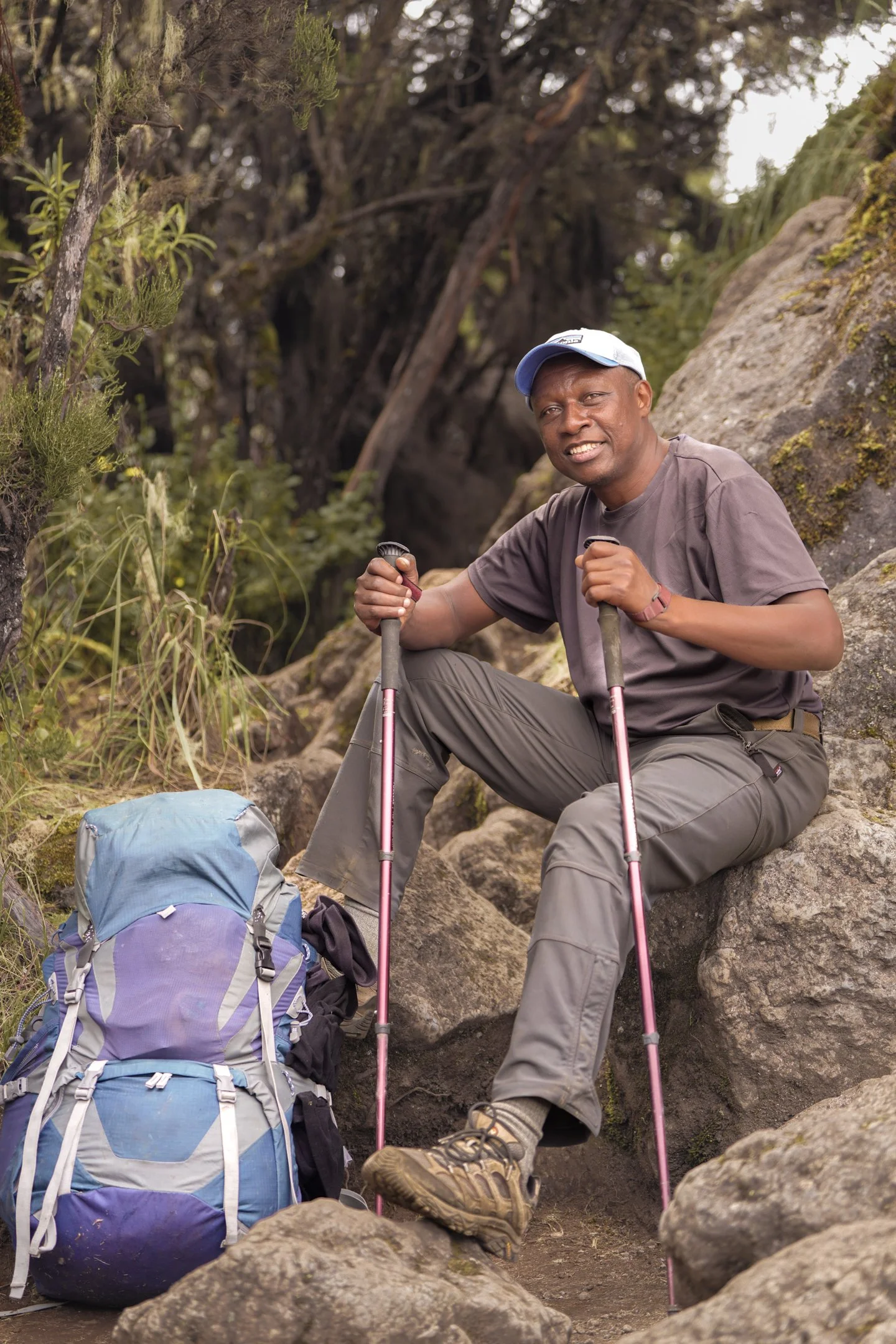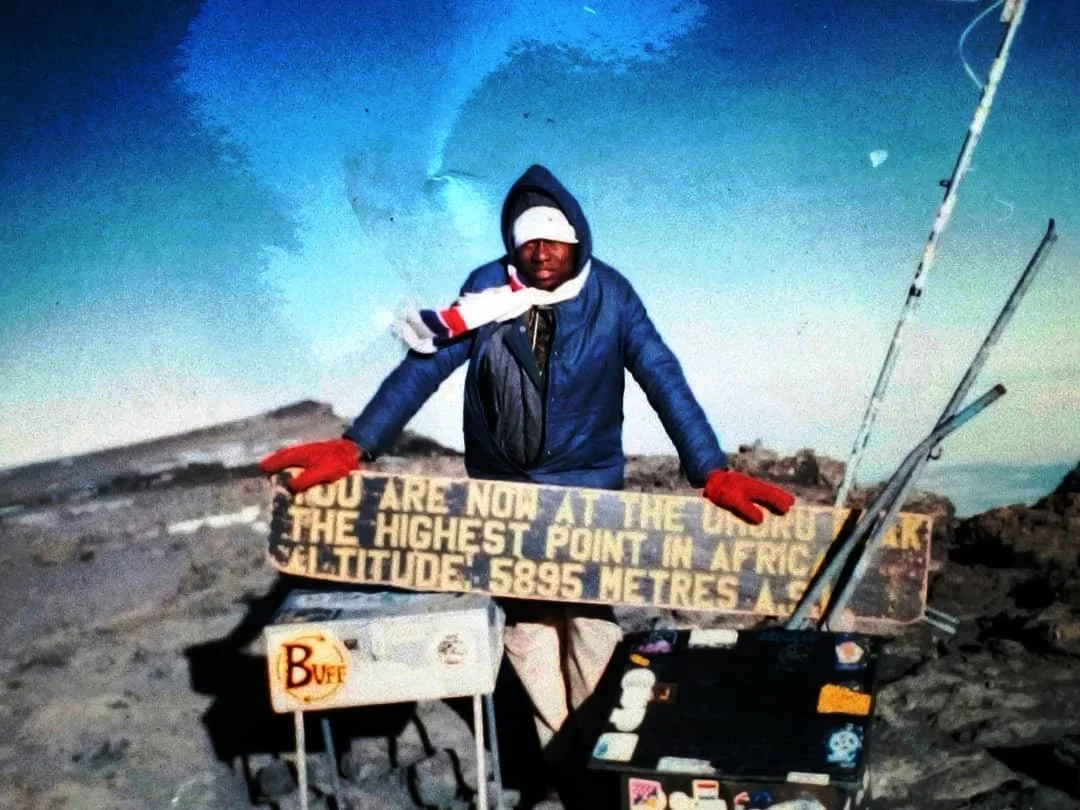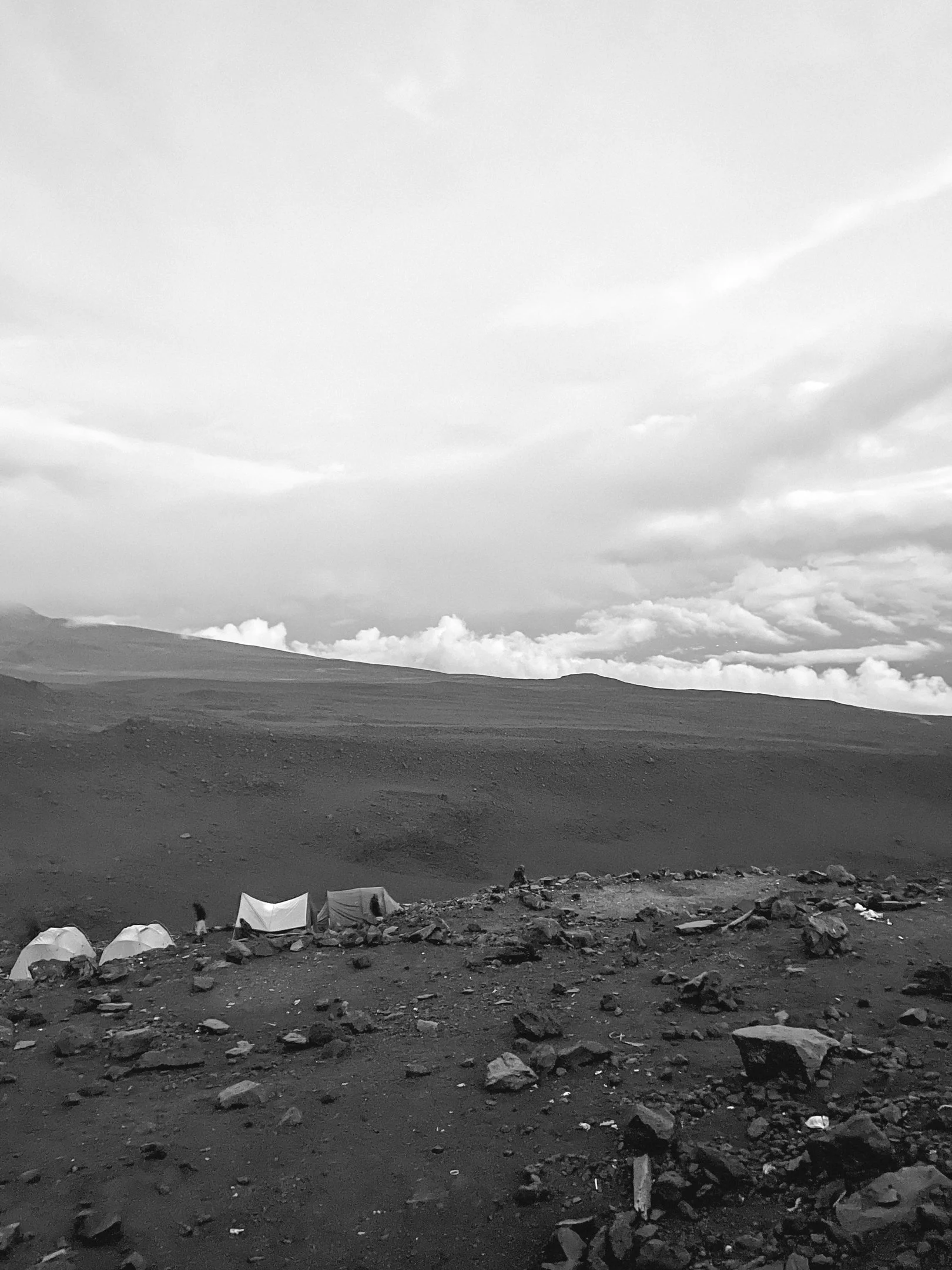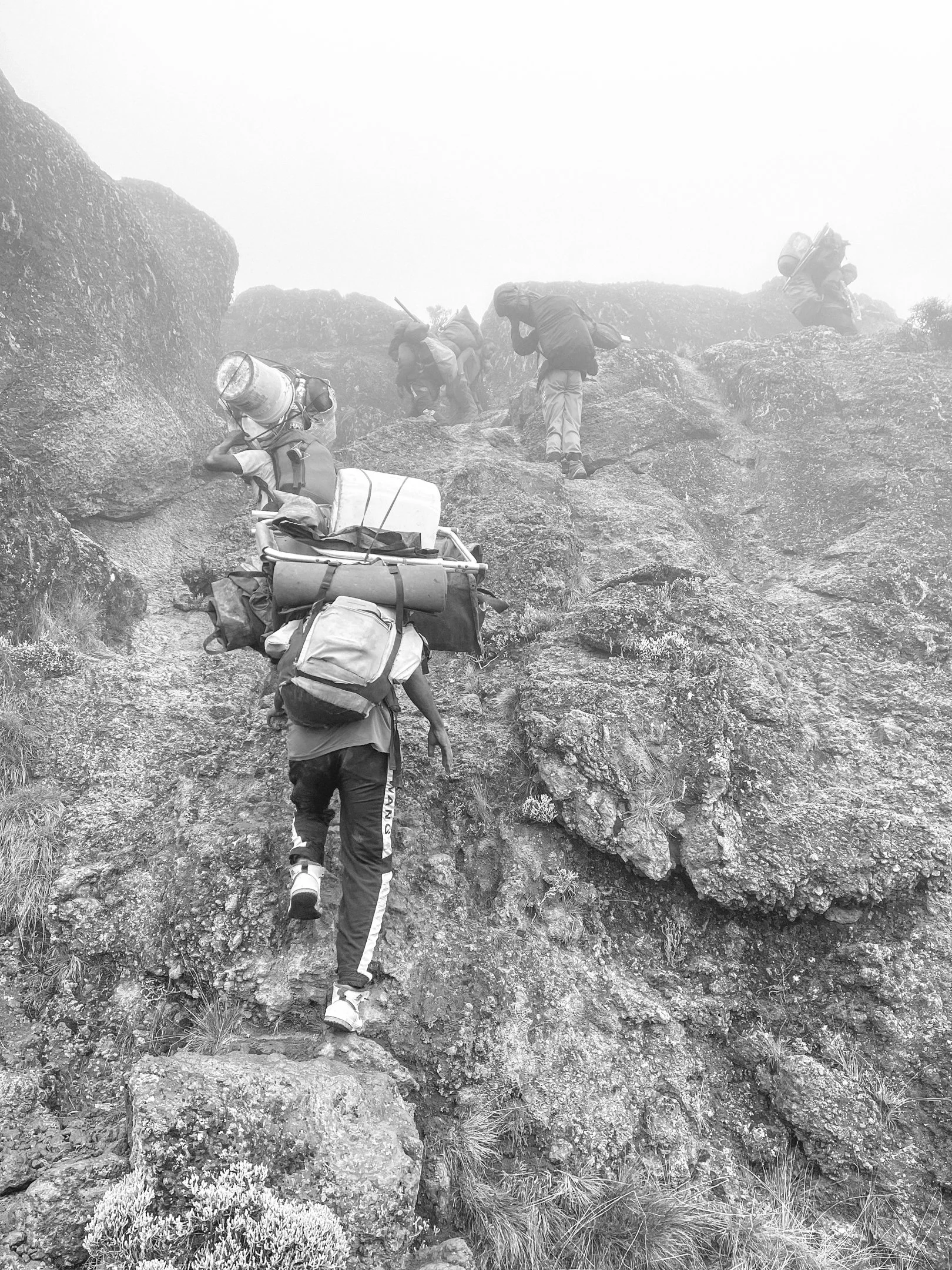Moroto, uganda
geo archives / May 2025
Lochap. That’s the name they gave me. Not one I chose but one I was given. A Karamojong word meaning “the one who watches over, who cleans what’s imperfect, who shapes and corrects, the one who looks after the perfection of things. Not a photographer. Not a tourist. Just a witness, A presence.
Here, kids are herding animals by the age of four. No complaints, no breaks. Women are the ones who build the homes, always. Men speak little, but they know the value of a cow: it’s with cows that marriages are sealed. And when the local beer flows, it’s shared from the same clay pot, the old way, all of us sitting around a wooden bench or a woven mat, under a sky filled with real stars. Shooting stars. No lights, No running water, But plenty of silence, plenty of space to breathe, to listen, to just be.
In the Manyatas, the gate is always open. Doesn’t matter who you are or where you’re from. Because in their eyes, any visitor can bring blessings from the outside world into the heart of the village. And maybe they’re right. Maybe that’s what living truly is. Not just getting by, but watching over, Over others, Over the land, Over what we build together.
Lochap, A name I’ll carry long after the photos fade.
Cows, Clay and Cosmos
Elly’s first claiming, 1996
eliaza mmbaga - Mount kilimanjaro, tanzania
geo archives / march 2025
On the slopes of Kilimanjaro, where the air thins and every step demands resilience, one man moves with unwavering purpose. Eliaza Mmbaga, known as Elly, has spent decades guiding climbers up Africa’s highest peak, not just leading them to the summit, but shaping their journey in ways they never anticipated. His presence is more than a professional necessity, it is the invisible force that lifts spirits, steadies weary legs, and turns a physical challenge into a life-changing experience.
his journey to the roof of Africa began long before he first set foot on the mountain. Growing up in vuje, a Tanzanian village, he was fascinated by the ‘Wazungu’, the foreign visitors who would come to his church, his school, his community To speak English, to engage with these outsiders, was seen as a mark of intelligence and opportunity. He practiced eagerly, piecing together words in broken English, unknowingly laying the foundation for his future. it wasn’t just the language that intrigued him. A neighbor in his village was a tour guide well-respected, financially secure, a symbol of success and This image planted a seed in young Elly’s mind. Later, as a member of his high school’s mountain club, he found himself drawn to the challenge of the climb, the camaraderie of the trails, and the pull of Kilimanjaro’s towering presence.
Elly’s career began at the very bottom literally. In 1996, he started as a porter, carrying heavy loads up the steep paths of the mountain. It was grueling, unforgiving work. But with every climb, he absorbed knowledge, watched experienced guides interact with trekkers, and studied the delicate balance between leadership and companionship. By 1997, he had earned his place as an assistant guide and Years later, he would become a lead guide, carrying not just the weight of a backpack, but the responsibility of other people’s dreams.
His first guiding experience was an awakening. Tourists listened intently to his words, asking him questions about the mountain, the culture, the land. He quickly realized that being a guide was about much more than physical endurance. It required knowledge, storytelling, patience, and a profound understanding of people.
For Elly, Kilimanjaro is more than a mountain, it is a teacher. It mirrors life itself, with its ups and downs, its moments of struggle and triumph. The slow, deliberate pace of ‘pole pole’ teaches patience, while the mountain’s ever-changing conditions reinforce the importance of adaptability. Above all, he has learned that success is not just about reaching the summit but it is about the journey, the people, and the lessons gathered along the way.
He has also witnessed how the mountain is changing. Glaciers that once seemed eternal have retreated. The seasons, once predictable, now shift unexpectedly. And the climbers have changed too. While many still come to conquer the peak, more and more arrive seeking something deeper, a connection to nature, to culture, to themselves.
Guiding is more than a job for Elly, it is an emotional investment. He has seen climbers break down in tears, overwhelmed by the challenge or by personal revelations discovered on the trail. He recalls a woman who reached the summit and silently took out two wedding rings, holding them for a long moment before throwing them into the crater, a symbolic farewell to a lost love.
He has also formed unbreakable bonds. One American family invited him to the United States to climb other mountains together. Other clients have returned, bringing their children, ensuring the next generation experiences the magic of Kilimanjaro through Elly’s guidance.
But the most rewarding moments come from perseverance, like the climber who had failed twice before finally summiting under Elly’s leadership. In gratitude, that same climber later paid for Elly’s advanced training, helping him further his career. Others have offered support in times of crisis, like the Brazilian tourists who sent financial help during the COVID-19 pandemic, knowing how deeply the loss of tourism affected guides and porters.
Elly’s dream was never just to climb Kilimanjaro, it was to build something lasting. Today, he has established his own tour agency, aiming to create opportunities for others, just as the mountain once created opportunities for him. But he knows that the future of Kilimanjaro depends on more than just business. It requires environmental conservation, fair wages for porters and guides, and a commitment to preserving the ecosystem that has given so much to so many.
If he weren’t a guide, Elly says, he would be a teacher. In truth, he already is one. Every day on the mountain, he teaches climbers resilience, humility, and respect for nature. He embodies the spirit of Kilimanjaro, strong, steady, and deeply connected to the land beneath his feet.
And as long as there are people dreaming of reaching the summit, eliaza mmbaga will be there, walking between worlds, bridging the gap between challenge and triumph, between the mountain and the climbers who seek its heights.
Mountains in His Steps
Elly’s first claiming, 1996
Ally Kinapi - Mount kilimanjaro, tanzania
geo archives / march 2025
On the slopes of Kilimanjaro, where altitude steals your breath and the cold bites deep, there are men who walk faster, carry heavier, and endure more than anyone else. Among them are the porters, often called “mountain machines” for their endurance. But behind the heavy loads they carry are individuals with dreams, struggles, and a quiet resilience that few climbers ever take the time to understand.
“A typical day?” he repeats, thinking for a moment. “The first day is the only one that feels normal. After that, every day is different. The journey only feels like it’s unfolding on the last day, when we finally descend.”
For those who work on the mountain, each step is a test of endurance. They carry around 20 kg up these treacherous slopes, pushing their bodies to the limit. Muscle cramps and headaches are constant companions, exhaustion settles in early. But the real challenge isn’t just physical strain. “The altitude, the cold… those are the real enemies,” he explains. “We don’t always have the right gear. Some nights, the temperature drops so low, you can feel your bones freezing.” Yet, at the end of each grueling day, gratitude still finds its way in. “It’s difficult to survive in these conditions, but we are blessed,” he says with a quiet smile.
There is a strange dynamic between porters and climbers. They walk the same mountain, facing the same challenges, yet their worlds are completely different. “Climbers depend on porters. Porters depend on climbers. But sometimes, climbers don’t see that,” he says. “They look at us as if we’re just here to carry their things, nothing more.” He has often felt invisible. But there are moments when things change. Sometimes a climber struggles, overwhelmed by exhaustion or altitude sickness. When porters step in to help, perceptions shift. “At first, some don’t believe a porter could really assist them. But after some good advice or a helping hand, we often become friends.”
Ally Kinapi dreams beyond the peaks of Kilimanjaro. “I want to travel, maybe to France. One day, I hope to be rich. I want to be my own boss, to have my own company.” Being a porter is not a lifelong career. As time passes, strength fades, and the body can no longer endure the same hardships. Despite this, he holds onto a different future. He has a diploma in animal health, a qualification few would associate with a porter. “If I had the capital, I would open a ranch. That is my dream. To raise livestock, to be a businessman, an ambassador for my field.”
For now, though, his life is here, on these slopes, carrying the weight of a mountain and a future still waiting to be built.
The Weight of Silence
geo archives / November 2024
This evocative black-and-white portrait reveals the essence of a sangoma, a traditional healer deeply respected within southern African cultures, particularly in Lesotho, where this image was captured. In Basotho society, a sangoma, or ngaka in the local language, holds a sacred role as an intermediary between the world of the living and the realm of the ancestors. Through medicinal knowledge, spiritual practices, and ancestral connections, these healers serve their communities as protectors, guides, and bearers of ancient wisdom.
In the photograph, the healer is adorned with a traditional fur headdress, intricate beads, and bells that symbolize protection, spiritual power, and cultural heritage. Each element is not only decorative but functional, used in rituals to amplify the sangoma’s connection to the spirit world. The intense gaze captured here speaks to the depth of their vocation, a lifelong calling to heal, interpret, and guide.
Through this portrait, the photographer honors the sangoma’s role in Lesotho’s cultural fabric, offering viewers a glimpse into the profound strength and spiritual depth of those who bridge worlds and keep ancestral wisdom alive.
eyes of the Sangoma
